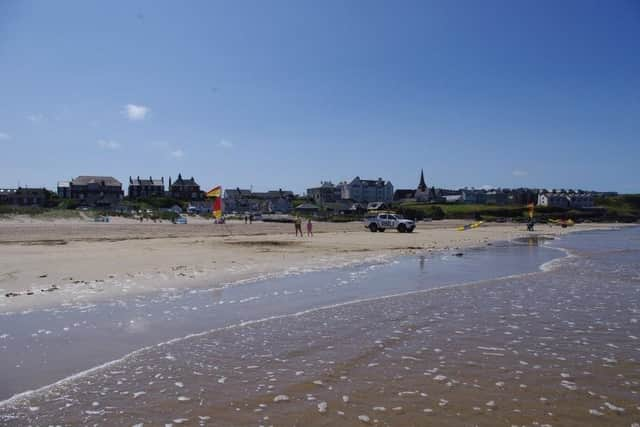Red-flag swimming ban at popular north Derry beaches as potentially harmful 'blue-green algae' detected
and live on Freeview channel 276
Both Castlerock and Portstewart beaches, on either side of the Barmouth where the River Bann meets the Atlantic, have been red-flagged for swimming as a result of the presence of blue-green algae which is not actually an algae but a type of bacteria called cyanobacteria.
The National Trust said: “Portstewart Strand has been red-flagged by the RNLI. Please be aware that it is unsafe for bathing due to blue-green algae.
Advertisement
Hide AdAdvertisement
Hide Ad“The Department of Agriculture, Environment, Rural Affairs (DAERA) sampling took place on Wednesday, July 5 and has confirmed the presence of potentially toxic blue-green algae at Castlerock, with suspected blue-green algae noted at Portstewart Strand.”


The National Trust points out that the bacteria are likely to have spread from the River Bann.
“These are freshwater species and the source is likely to be the River Bann. DAERA Emergency Pollution are aware of the situation. Please protect yourself and others by staying out of the water,” the National Trust said.
The warning follows the detection of blue-green algae in the Bann and one of its tributaries at the beginning of the week.
Advertisement
Hide AdAdvertisement
Hide AdOn Monday Causeway Coast and Glens Borough Council said it had been spotted in both the Bann and the Agivey.
“It is advised that all contact with water containing these algae is avoided. Farmers and pet owners should also ensure that their animals do not have access to this water,” it stated.
According to the NIEA cyanobacteria occurs naturally in lakes, ponds, canals, rivers and reservoirs.
"Unlike other types of algae, if it becomes too abundant it can pose a health risk to people, pets and wild animals who come into contact or ingest it.
Advertisement
Hide AdAdvertisement
Hide Ad"It can cause skin rashes, eye irritations, vomiting, diarrhoea, fever and muscle and joint pain. Blue-green algae has also been attributed to the death of dogs, birds, fish and livestock in parts of the UK,” it advises.
The Public Health Agency (PHA) says it can pose a health risk to humans.
"They are very small and can’t be seen with the naked eye. When environmental conditions are just right (they like warm still water with plenty of nutrients), they can multiply quickly forming a ‘bloom’.
"Blooms appear as a discolouration of the water (often a pea green colour) or as a visible scum layers or floating mats. Blooms usually occur in the summer and early autumn but can occur at other times of the year, if conditions are right.
Advertisement
Hide AdAdvertisement
Hide Ad“There are no quick or easy remedies for the control of blooms once they appear in a lake or pond,” the PHA states.
The bacteria are capable of producing toxins that can affect human health.
"Blue-green algae may produce several different toxins which are harmful to human health. You may be at risk when you use a lake or other body of water which contains a bloom.
"You may be exposed during any activity where you may come into contact with the water, swallow water or breathe in water droplets for example swimming, sailing and boating, water skiing or even fishing.
Advertisement
Hide AdAdvertisement
Hide Ad“These toxins can cause: skin rashes, nausea, vomiting, stomach pains, fever, headaches and occasionally, more serious illness such as liver and brain damage.”